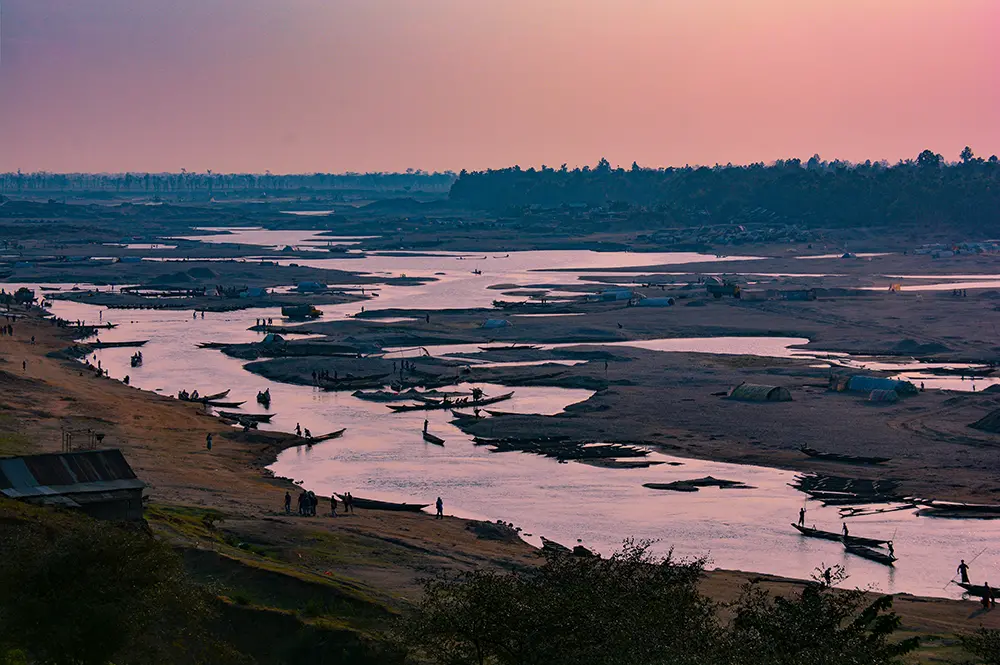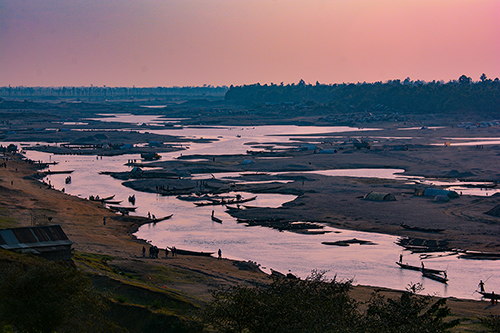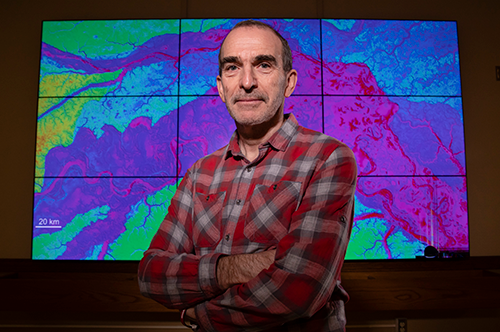

For thousands of years, large rivers and their floodplains have been essential to civilization. They still are—with billions of people living around the world’s major rivers—and an Illinois scientist has published the most up-to-date summary of the critical issues facing these vital regions.
Jim Best, the Jack and Richard Threet Professor of Sedimentary Geology and professor of geography and geographic information science, has published a paper in Nature Geoscience reviewing 32 of the world’s largest rivers, including the Amazon, Congo, Nile, Yangtze, Brahmaputra, Mekong, and Mississippi. He wrote the paper to highlight the rapid, extensive, and potentially irreparable transformations occurring along these waterways.
“There has been an increasing amount of research in the last decade looking at different aspects of how rivers are changing as a result of human intervention,” said Best, who has been studying rivers for more than 30 years. “What this paper tries to do is bring those main stressors into focus.”
These stressors are both natural and human-made, including damming, climate change, flooding, drought, pollution, water withdrawal and transfers, introduction of non-native species, fragmentation of river networks, and sediment mining. The changes wrought by these stresses are threatening ecosystems and habitats in these economically critical areas.
“Change is happening at an alarmingly fast rate,” Best said. “Many people may not appreciate just how environmentally sensitive a lot of these big rivers are, and for some rivers there is now no going back. Although climate change is a central issue of our times, environmental change produced by a variety of stressors within some of these rivers is happening at a far faster rate.”

Big rivers often cross national boundaries and are paramount to the livelihood of billions of people, as they play central roles in food production, hydropower generation, travel, and trade routes, as well as forming critical zones of ecological diversity. Best notes in his paper, “Anthropogenic stresses on the world’s big rivers,” that hydropower from rivers alone totals about 16 percent of the world's total electricity and about 70 percent of the world’s renewable electricity. Yet the economics and green-credentials of hydropower are uncertain.
“Prioritizing the fate of the world’s great river corridors on an international political stage is imperative,” Best wrote. “Future sustainable management, and establishment of environmental flow requirements for the world’s big rivers, must be supported through coordinated international funding, and trans-continental political agreement to monitor these rivers, finance their continual upkeep and help ameliorate increasing anthropogenic pressures.”
In an interview, he added that it’s important for people to begin working to preserve rivers soon.
“For a few big rivers, some research suggests it might be too late and they will forever be changed in a major way, but for other rivers there are still steps we can take to make these stressors less of an issue,” Best said. “There has to be a realization that people, especially in developing countries, have a reasonable aspiration for economic development. Use of these rivers is thus essential to improve their quality of life. However, our management and use of these big waterways has to be more sustainable than what we’re doing at the moment, and action is needed in the very near future if we are to avoid ecosystem collapse in some of the world’s great rivers.”
The paper can be read here. A blog with more information about the paper can be read here.


